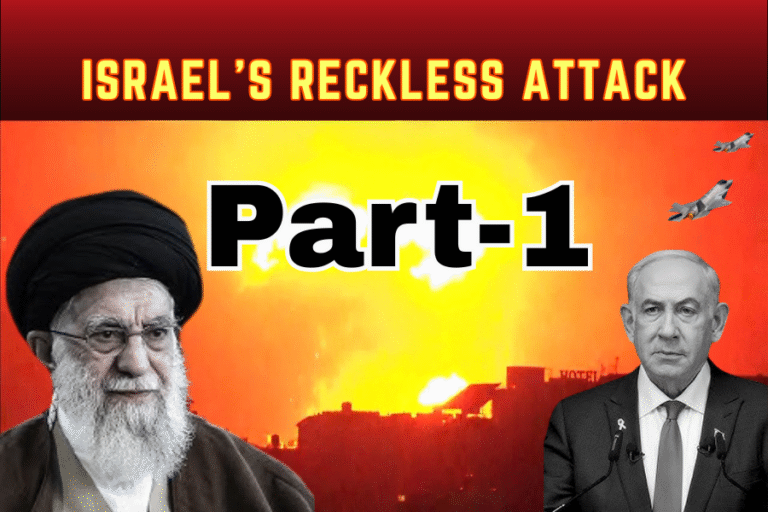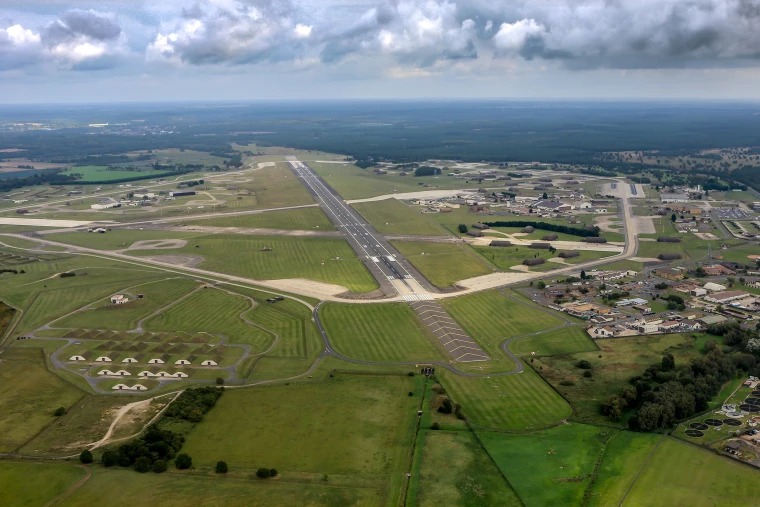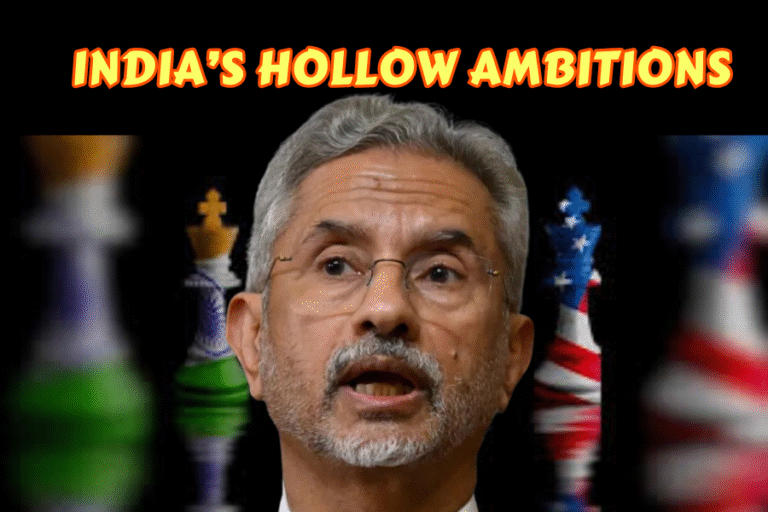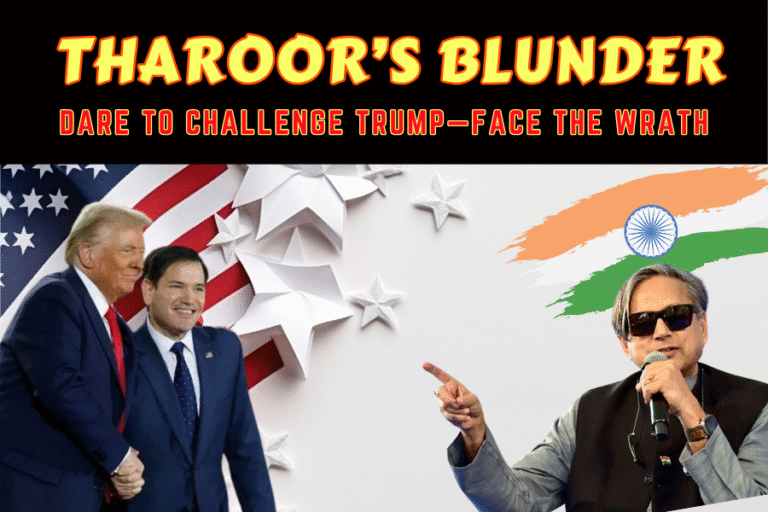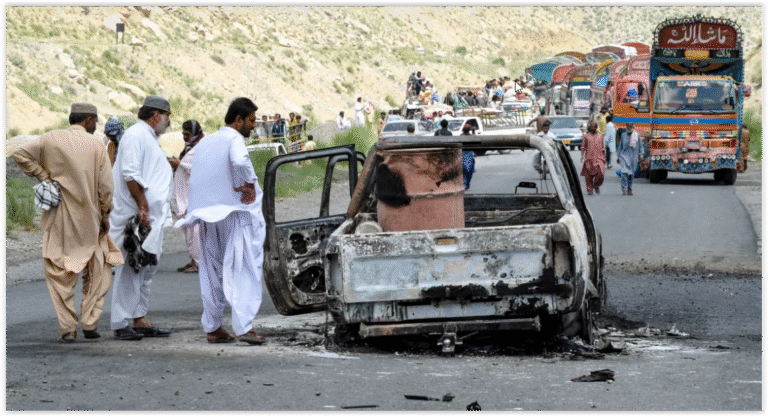(By Khalid Masood)
In the past 24 hours (i.e. 17-18 June), the Israel-Iran conflict has escalated to unprecedented levels, plunging the Middle East into a state of heightened uncertainty and fear. Israel’s relentless airstrikes on Tehran and other Iranian cities, coupled with Iran’s retaliatory missile barrages, have pushed the region to the brink of a broader war. The G7 Summit in Kananaskis, Canada, concluded on 17 June 2025, with a joint statement overshadowed by U.S. President Donald Trump’s abrupt departure and his alarming call for Tehran’s 10 million residents to evacuate immediately. This article analyses the events of the last 24 hours, their diplomatic and humanitarian implications, and the broader context of Middle East statecraft, criticising the aggressive posturing of Israel and its Western allies whilst highlighting Iran’s restrained yet defiant response.
1. The Last 24 Hours: A Timeline of Escalation
a. Israeli Airstrikes Intensify on Tehran
Since early Tuesday, 17 June 2025, Israel has unleashed a fresh wave of airstrikes on Tehran, targeting what the Israel Defence Forces (IDF) claim are “military infrastructure” sites, including energy facilities, police stations, and industrial complexes. The IDF issued evacuation warnings for Tehran’s District 18, a densely populated area, exacerbating panic amongst residents. Strikes also hit a state television station, killing three staff members and disrupting broadcasts, a move Iran condemned as an attack on civilian infrastructure. Iranian authorities reported 224 deaths and over 1,800 injuries since Israel’s campaign began on Friday, with Tuesday’s strikes alone killing at least 24 civilians.
b. Iran’s Retaliatory Missile Strikes
In response, Iran launched ballistic missiles and drones targeting Israeli cities, including Tel Aviv and Haifa, late Tuesday night. The IDF reported 35 missiles penetrating Israel’s Iron Dome, with strikes killing eight civilians, including three at Haifa’s Bazan oil refinery. Iran’s Revolutionary Guards claimed hits on Israel’s Military Intelligence Directorate and Mossad’s operational centre, though Israel denied these claims. Iran’s missile stockpile, estimated at 2,000 at the war’s onset, is reportedly dwindling, but its Fattah missiles have challenged Israeli defences.
c. Trump’s Tehran Evacuation Call and G7 Departure
U.S. President Donald Trump escalated tensions by posting on Truth Social early Tuesday, urging Tehran’s residents to “immediately evacuate,” warning that Iran’s failure to sign a nuclear deal had led to this crisis. He left the G7 Summit a day early, citing Middle East developments, and convened the National Security Council upon returning to Washington. Trump’s rhetoric shifted from diplomatic overtures to demanding Iran’s “unconditional surrender,” claiming the U.S. knows the location of Supreme Leader Ayatollah Ali Khamenei but would not assassinate him “for now.”
d. G7 Summit Statement
The G7 leaders, including Trump before his departure, signed a joint statement on 17 June, affirming Israel’s right to self-defence, labelling Iran the “principal source of regional instability and terror,” and calling for a resolution to the crisis through “broader de-escalation.” The statement avoided demanding a ceasefire, reflecting a compromise to maintain G7 unity amid Trump’s hawkish stance. French President Emmanuel Macron and UK Prime Minister Keir Starmer emphasised diplomacy, with Macron warning against regime change in Iran as a “strategic error.”
e. Humanitarian Crisis in Tehran
Tehran’s residents faced chaos as evacuation orders triggered mass exodus. Traffic clogged the Karaj-Chalus road, petrol stations ran dry, and metro stations, mosques, and schools opened as shelters. A resident in a video game streamers’ chat lamented, “How can 10 million people evacuate Tehran?” capturing the logistical nightmare. Internet restrictions and cyberattacks, attributed to Israel, hampered communication, leaving Iranians reliant on fragmented news.
2. Analysis: Implications and Statecraft
a. Humanitarian and Domestic Impact in Iran
Iran’s resilience in the face of Israel’s onslaught is remarkable, yet the humanitarian toll is devastating. The targeting of civilian infrastructure, such as oil refineries and media outlets, violates international norms and fuels anti-Israel sentiment amongst Iranians. The evacuation of Tehran, a city of nearly 10 million, is logistically impossible, exposing Israel’s warnings as performative cruelty designed to sow panic. Iran’s government has prioritised civilian safety, opening shelters and maintaining public services despite relentless strikes. However, the loss of 224 lives and damage to energy infrastructure threaten economic stability, with potential fuel shortages looming.
Domestically, the crisis has rallied Iranians around their leadership, countering Western narratives of a divided populace. Supreme Leader Khamenei’s vow of a “strong response” has galvanised national pride, whilst President Masoud Pezeshkian’s call for a “decisive” counterstrike reflects Iran’s refusal to capitulate. Iran’s restrained missile retaliation, targeting military sites, contrasts with Israel’s indiscriminate bombing, positioning Tehran as a measured actor in a lopsided conflict.
b. Diplomatic Ramifications
The G7’s statement, whilst critical of Iran, exposes Western hypocrisy. By endorsing Israel’s “self-defence” without condemning its aggression, the G7 tacitly greenlights a campaign that risks regional chaos. Macron’s and Starmer’s calls for restraint highlight European unease with Israel’s escalation, but their failure to demand a ceasefire undermines their credibility. Iran’s openness to talks with U.S. Vice President JD Vance, signalled by Foreign Minister Abbas Araghchi, demonstrates Tehran’s diplomatic maturity, contrasting with Trump’s belligerent posturing.
Trump’s evacuation call and “unconditional surrender” demand are reckless, undermining U.S. claims of neutrality. His initial diplomacy, mediated by Oman, was sabotaged by Israel’s preemptive strikes, suggesting Netanyahu exploited Trump’s indecision to force Washington’s hand. The U.S. deployment of B-52 bombers and an aircraft carrier to the Middle East signals a dangerous tilt towards military involvement, risking a broader war that could fracture Trump’s “America First” base, as voiced by critics like Tucker Carlson and Charlie Kirk.
c. Regional and Global Dynamics
Israel’s claim of “aerial superiority” over Tehran is a propaganda victory, but its failure to destroy Iran’s nuclear facilities, particularly the fortified Fordo site, underscores the campaign’s limits. Iran’s nuclear programme, which it insists is peaceful, remains a rallying point for sovereignty, with no evidence supporting claims of weaponisation, as confirmed by U.S. intelligence chief Tulsi Gabbard. Israel’s strikes on Iran’s proxies, including Hezbollah and Hamas, have weakened Tehran’s regional influence, but Iran’s missile strikes on Israel demonstrate its enduring reach.
Globally, China’s call for its citizens to leave Israel and its urging of restraint reflect Beijing’s growing concern over Middle East instability. Russia, distracted by Ukraine, has offered rhetorical support to Iran but no material aid, leaving Tehran diplomatically isolated yet defiant. The Houthis’ coordinated attacks with Iran signal a broadening of the anti-Israel axis, complicating U.S. and Israeli calculations.
d. Trump’s Mode: A Study in Contradiction
Trump’s behaviour—vacillating between diplomacy and bellicosity—reveals a lack of coherent strategy. His Tehran evacuation call, devoid of context, amplified civilian panic whilst aligning him with Netanyahu’s hardline stance. His rejection of Israel’s proposal to assassinate Khamenei, whilst claiming to know his location, is a provocative taunt that undermines de-escalation efforts. Trump’s early G7 exit, framed as a response to Middle East “big stuff,” suggests domestic political posturing, appealing to hawkish Republicans whilst alienating anti-interventionist supporters. His press secretary’s insistence on a “great day” at the G7, despite his abrupt departure, underscores the administration’s attempt to spin chaos as leadership.
3. Critique of Western Narratives
The G7’s portrayal of Iran as the “principal source of terror” ignores Israel’s decades-long aggression, from the Stuxnet cyberattack to the assassinations of Iranian scientists. Iran’s nuclear programme, developed in response to Western sanctions and Israeli threats, is a legitimate pursuit of energy sovereignty, yet it’s demonised to justify military action. The U.S. and Israel’s refusal to acknowledge Iran’s restraint—firing missiles only after sustained bombardment—perpetuates a narrative of Iranian belligerence, obscuring the asymmetry of the conflict.
Trump’s rhetoric, echoed by Israeli Foreign Minister Israel Katz’s claim that Iran’s “state symbols are collapsing,” aims to humiliate Tehran, but it underestimates Iranian resilience. The West’s obsession with regime change, warned against by Macron, risks repeating the disasters of Iraq and Libya, destabilising a nation of 90 million with no viable alternative government. Iran’s diplomatic overtures, including Araghchi’s willingness to negotiate, deserve serious engagement, not Trump’s ultimatums.
4. Conclusion
The last 24 hours have laid bare the destructive trajectory of the Israel-Iran conflict, driven by Israel’s relentless strikes and enabled by Western acquiescence. Iran, despite immense pressure, has shown remarkable restraint, prioritising civilian safety and diplomatic channels whilst defending its sovereignty. The G7’s tepid call for de-escalation, overshadowed by Trump’s inflammatory rhetoric, fails to address the root causes of the crisis: Israel’s unchecked aggression and the West’s refusal to respect Iran’s legitimate aspirations. Trump’s evacuation call and surrender demand reflect a dangerous impulsiveness, risking a wider war that could engulf the region. As Tehran’s residents endure fear and loss, Iran’s defiance offers a beacon of resilience against imperialist designs. The international community, led by voices like Macron and Starmer, must prioritise diplomacy over militarism, engaging Iran as an equal to avert catastrophe and restore stability to the Middle East.


